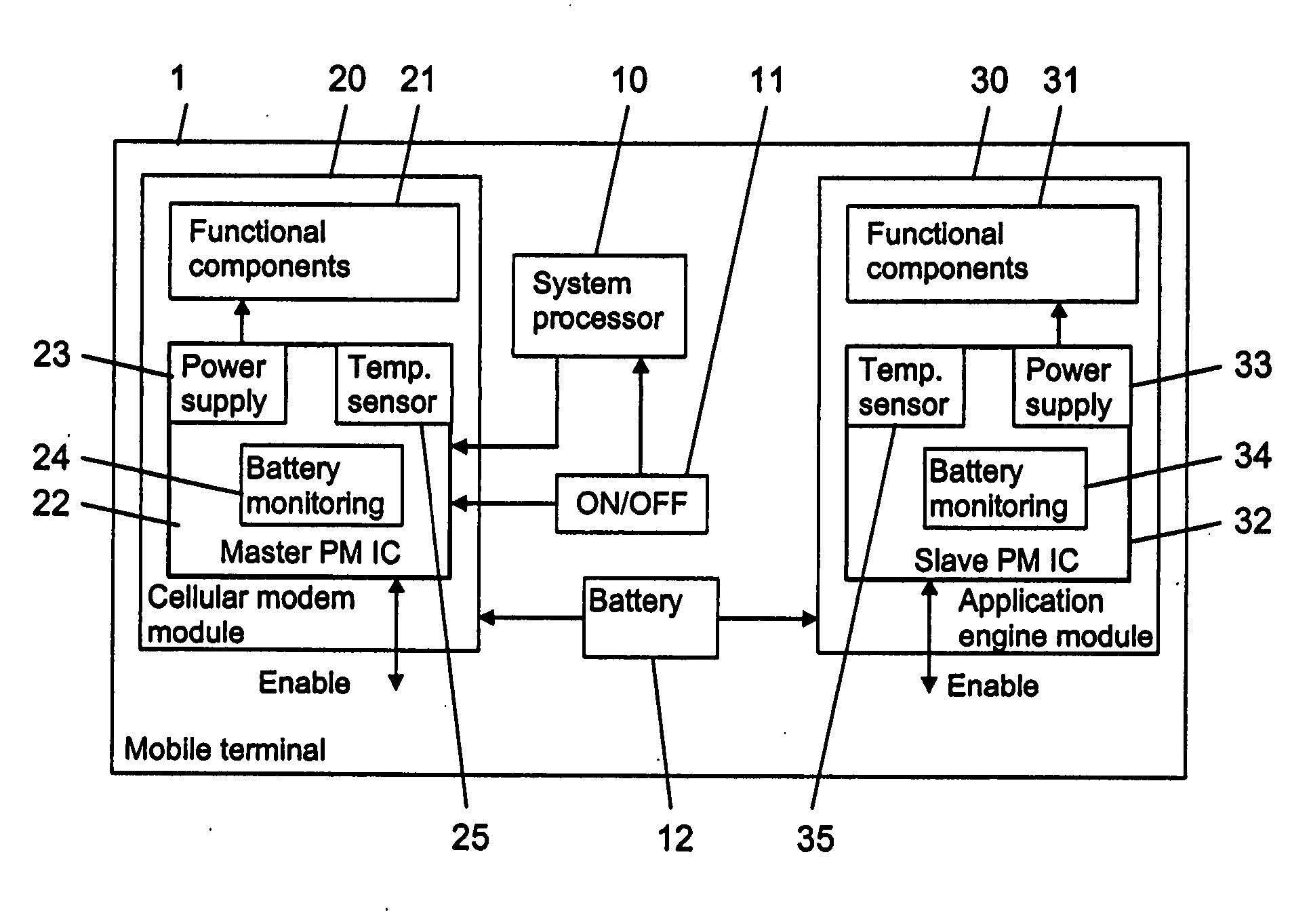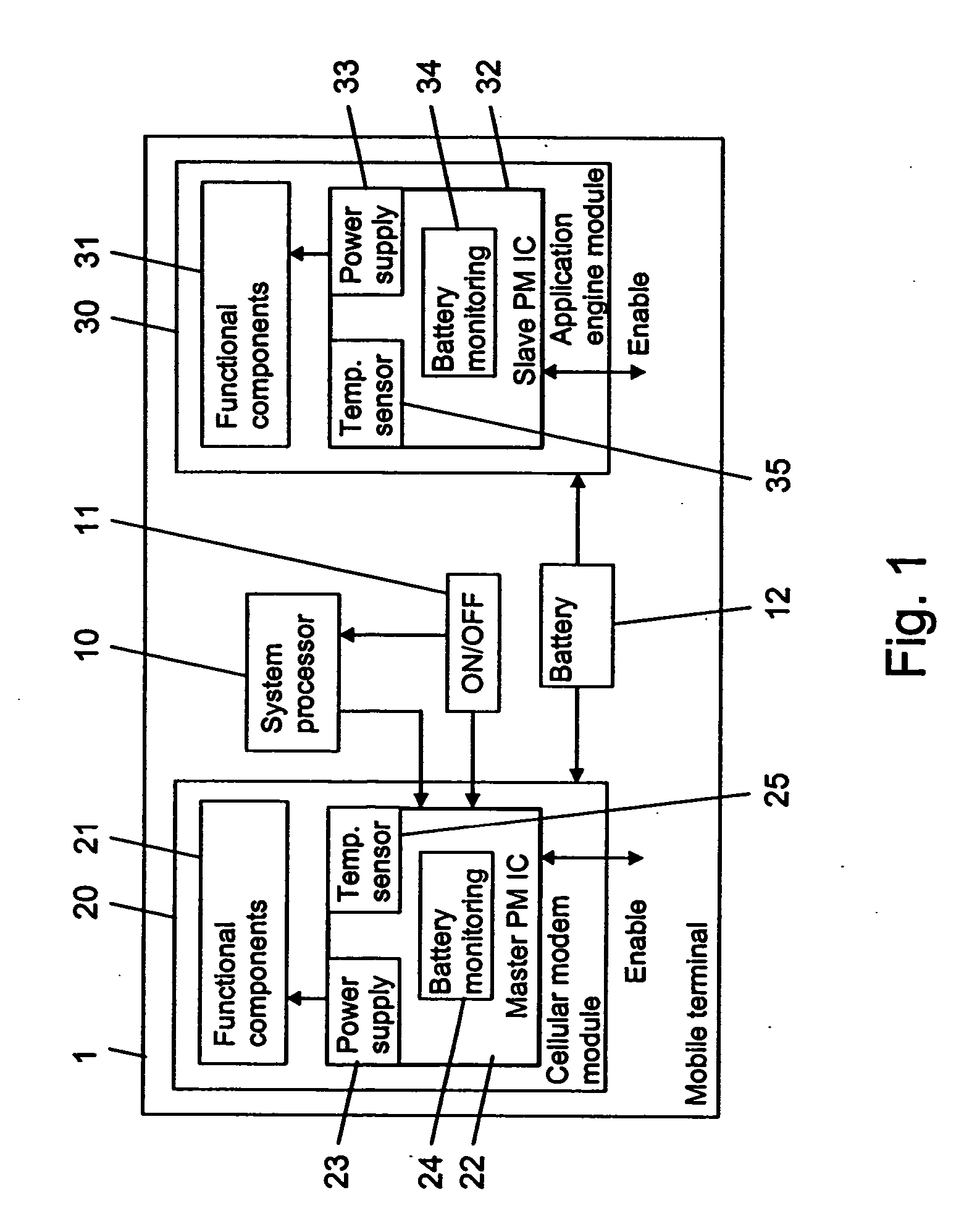Power management
a power management and power technology, applied in power management, high-level techniques, instruments, etc., can solve problems such as troublesome control shutdown, system power up, circuit still having a slightly different threshold, etc., and achieve the effect of easy system extension
- Summary
- Abstract
- Description
- Claims
- Application Information
AI Technical Summary
Benefits of technology
Problems solved by technology
Method used
Image
Examples
Embodiment Construction
[0042]FIG. 1 is a schematic block diagram of a mobile terminal 1, which enables a flexible implementation of power management circuits in accordance with an embodiment of the invention. It is to be understood that the invention can equally be implemented in any other electronic device comprising a plurality of power management circuits.
[0043] The mobile terminal 1 includes at least one system processor 10, which runs software for coordinating the operations in the mobile terminal 1. The mobile terminal 1 further comprises an ON / OFF button 11 and a battery 12 providing the power supply for the mobile terminal 1.
[0044] The mobile terminal 1 further includes a cellular modem module 20. The cellular modem module 20 comprises functional components 21 for a cellular modem integrated on a chip, including for example a processor, an RF module and memory components. In addition, the cellular modem module 20 comprises a master power management (PM) IC 22. The master PM IC 22 comprises a pow...
PUM
 Login to View More
Login to View More Abstract
Description
Claims
Application Information
 Login to View More
Login to View More - R&D
- Intellectual Property
- Life Sciences
- Materials
- Tech Scout
- Unparalleled Data Quality
- Higher Quality Content
- 60% Fewer Hallucinations
Browse by: Latest US Patents, China's latest patents, Technical Efficacy Thesaurus, Application Domain, Technology Topic, Popular Technical Reports.
© 2025 PatSnap. All rights reserved.Legal|Privacy policy|Modern Slavery Act Transparency Statement|Sitemap|About US| Contact US: help@patsnap.com



